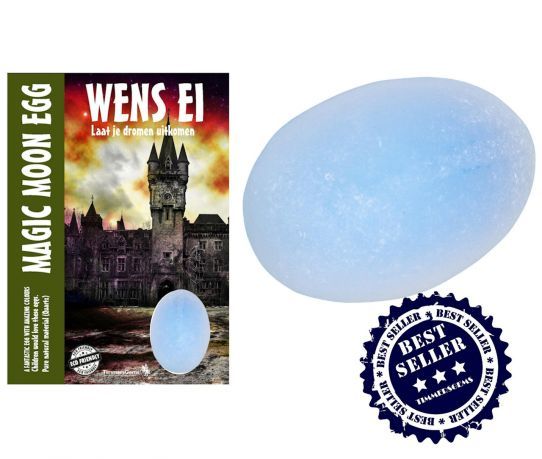We use cookies to make your experience better.
Magic Moon ("Opaline") egg (our most popular gemstone egg ever)
- Buy 50 for €3.50 each and save 12%
- Buy 200 for €2.99 each and save 25%
Our Magic Moon egg lies against the enchanting, beautiful opalization and most resembling opaline or opalite, yet it is not and does not matter. If you look at the stone, you experience a spiritual glow and it reminds you of a rising moon in cloud fog full of sparkles and color spectacles.
Magic or sorcery is the alleged art of manipulating reality from the idea that one can come into contact with the supernatural through rituals and delusions. One of the functions of magic was and is the unusual indication or to hold a hold in an uncertain world. Practices that are seen as magic include predictions, astrology, insults, witchcraft, sorcery, spiritualism and sometimes alchemy. Modern anthropological and sociological studies of magic see these and other practices earlier as aspects and expressions of a global worldview of a particular culture at a particular time, just as religion and science form part of the culture of a people. In other words, magic is not just a "technique": it is inevitably a result of a backward worldview, a way in which everything is understood and explained. Thus, magic also describes a manner of rationality, a cosmology, which assumes that invisible forces can bring about changes in material reality. This article focuses on Western traditions and perceptions of magic.
Iris (Greek: iris = rainbow, also iridizing) is the physical phenomenon of angle-dependent color and occurs only in structural colors. Iridescent colors are the result of refraction and interference of light in or on the surface of an object that consists of different layers with different refractive indices. The colorful appearance is often described as having 'the colors of the rainbow'. Some examples are: oil on water, mother of pearl or soap bubbles. The phenomenon is generally found by people in general. Irisation is caused by multiple reflections in (semi-) transparent material. As a consequence phase shifts occur in the reflective waves. Due to mutual interference of these waves shifted to each other in phase, again, modulation differences arise, with some wavelengths being amplified and others being properly attenuated. The iris-responsive reflections, for example, occur in rock crystal due to fractures due to small cracks in the material and in pearl nut because the material is made up of many thin layers. Because the effect is dependent on the viewing angle, iris can not actually be recorded with photography, but should be used for spectroscopy.












